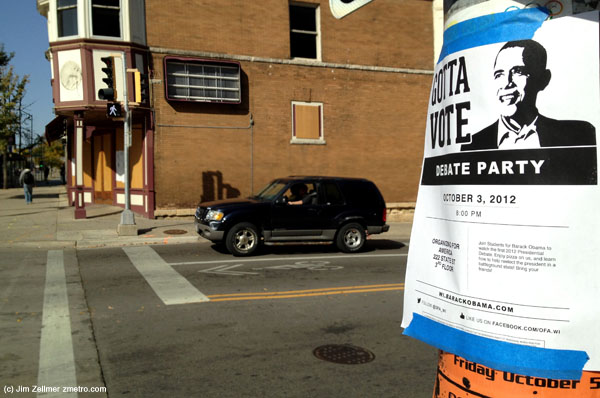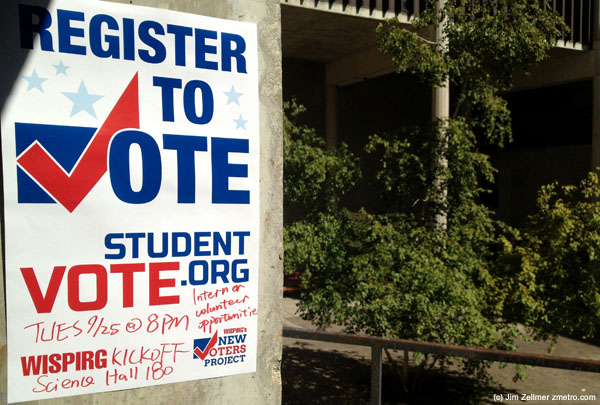The six CIA officers were sweating. It was almost noon on a June day in the Middle Eastern capital, already in the 90s outside and even hotter inside the black sedan where the five men and one woman sat jammed in together. Sat and waited.
They had flown in two days earlier for this mission: to break into the embassy of a South Asian country, steal that country’s secret codes and get out without leaving a trace. During months of planning, they had been assured by the local CIA station that the building would be empty at this hour except for one person—a member of the embassy’s diplomatic staff working secretly for the agency.
But suddenly the driver’s hand-held radio crackled with a voice-encrypted warning: “Maintain position. Do not approach target.” It was the local CIA station, relaying a warning from the agency’s spy inside: a cleaning lady had arrived.
The Plight of Young, Black Men Is Worse Than You Think
The U.S. has the highest incarceration rate of any wealthy nation, with about 2.3 million people behind bars at any given moment. (That’s 730 out of 100,000, vs. just 154 for England and Wales.) There are more people in U.S. prisons than are in the country’s active-duty military. That much is well known. What’s less known is that people who are incarcerated are excluded from most surveys by U.S. statistical agencies. Since young, black men are disproportionately likely to be in jail or prison, the exclusion of penal institutions from the statistics makes the jobs situation of young, black men look better than it really is.
That’s the point of a new book, Invisible Men: Mass Incarceration and the Myth of Black Progress, by Becky Pettit, a professor of sociology at the University of Washington. Pettit spoke on Thursday in a telephone press conference.
US hooked on ‘crystal meth’ debt, says Gross
Bill Gross has compared the US government’s reliance on debt financing to a “crystal meth” addict, in the latest in a series of dire warnings from one of the most influential investors in the bond market.
“The US, in fact, is a serial offender, an addict whose habit extends beyond weed or cocaine and who frequently pleasures itself with budgetary crystal meth”, said Mr Gross, who manages the $273bn Total Return bond fund for Pimco.
Investors sound alarm on UK’s RPI reform
In an investment outlook that began with a discussion of the 69-year old investor’s lack of long-term memory, Mr Gross returned again to a theme that he has visited over the last decade: unsustainable US spending.
A Gorgeous Madison Weekend

God’s Handiwork




Hitler’s Berlin: Abused City
FOR LIBERALS AND leftists in Germany, Berlin has always represented the dark side of German history. As capital of the military state of Prussia, it became the grandiose center and symbol of the Reich founded by Bismarck in 1871—culturally stuffy, conservative, dull, backward, dominated by civil servants and soldiers. No wonder that when liberals and Social Democrats established a democratic Republic after the overthrow of the Kaiser, they avoided the Prussian capital. They sought to distance themselves from Berlin by holding the Constituent Assembly in the provincial town of Weimar, forever associated with the name of Goethe and Schiller, Germany’s greatest poets and writers. Weimar was, of course, far from the revolutionary turbulence and street-fighting raging across the capital in the early months of 1919, but it also provided distance from a past that the creators of the new Germany wanted to reject.
Why Big Companies Can’t Innovate
Big companies are really bad at innovation because they’re designed to be bad at innovation.
Take a story plucked from the pages of Gerber’s history. In 1974, the company’s growth potential was waning. In order to grow profitability and fight margin pressure, Gerber executives turned towards a market they hadn’t successfully penetrated for decades: adult food.
Luckily for a company adept in sourcing and processing vegetables and fruits, tens of millions of busy Americans were spending more time at work and fewer hours in front of the stove. Gerber’s team knew if they could develop a quick, healthy meal for adults, they had an avenue into meaningful growth.
When Gerber launched its product targeted towards this opportunity, it flopped disastrously. It’s no surprise: Instead of developing a novel line of food suited to the needs of busy Americans with distinct branding and its own distribution strategy, Gerber slapped a new label — excitingly named “Gerber Singles” — on existing pureed products and shipped them out for placement in a different aisle.
Needless to say, working Americans weren’t busting down the doors at Safeway to pick up the latest, greatest flavor of Gerber Singles carrots. In three months, the product was pulled from all grocers and returned to the company.
Disharmonic Convergence of Free Speech Free Fall
The past 72 hours has held one of the strangest disharmonic convergence of free speech events I have ever seen.
(1) On Tuesday, President Obama flourished his pretty rhetoric on free speech to the United Nations (UN):
Those in power have to resist the temptation to crack down on dissidents.(2) A day later, the Sydney Morning Herald published U.S. Air Force documents classifying Wikileaks and its founder Julian Assange as “enemies of the state,” an action in sharp contrast to Obama’s rhetoric about the importance of protecting dissent in a democracy.
Selling Cars
Except during a short few golden years, it’s never been easy to sell cars. In that one all-too-brief period, after the Second World War, GIs flush with wartime salary savings and a public tired of driving antiquated cars from the 30s all flooded into dealerships at once, trying to buy the few vehicles available. For the most part, though, achieving greatness selling cars is not an easy career path. That’s a shame, because most people actually enjoy getting new cars; they just claim to hate the process – or so we are told.
In reality, over the past 30 years right at 85 percent of all new car buyers have said in surveys that their last car purchase was handled in either a “satisfactory” or “highly satisfactory” manner. Not surprisingly, most car salespeople say that they enjoy dealing with about 85 percent of their customers.
As for the dreaded negotiation, anyone who’s been selling cars for more than six months can tell you it’s typically the customer who usually starts the process. You may not realize it, but you open negotiations the moment you ask, “Is that the best you can do?”
How Advertisers Convinced Americans They Smelled Bad
Lucky for Edna Murphey, people attending an exposition in Atlantic City during the summer of 1912 got hot and sweaty.
For two years, the high school student from Cincinnati had been trying unsuccessfully to promote an antiperspirant that her father, a surgeon, had invented to keep his hands sweat-free in the operating room.
Murphey had tried her dad’s liquid antiperspirant in her armpits, discovered that it thwarted wetness and smell, named the antiperspirant Odorono (Odor? Oh No!) and decided to start a company.
But business didn’t go well—initially—for this young entrepreneur. Borrowing $150 from her grandfather, she rented an office workshop but then had to move the operation to her parents’ basement because her team of door-to-door saleswomen didn’t pull in enough revenue. Murphey approached drugstore retailers who either refused to stock the product or who returned the bottles of Odorono back, unsold.
Many early-1900s kits are still standing
Sears, the department store, was one of the most prolific manufacturers. It sold more than 70,000 of its Modern Homes from 1908 to 1940, customised and delivered to a local rail depot in a boxcar or two. About 25,000 are estimated to remain today.
Models ranged from two-room cottages without indoor plumbing to the Magnolia, which had a dozen rooms including servants’ quarters. The cheapest sold for less than $1,000; the grandest for more than five times that amount.
Kit catalogues highlighted the labour and cost savings. A 1926 catalogue stated that a Sears home would save more than 230 man hours during construction and eliminate the need for an architect. Though it saved only about $125, that was enough to make home ownership achievable for many.